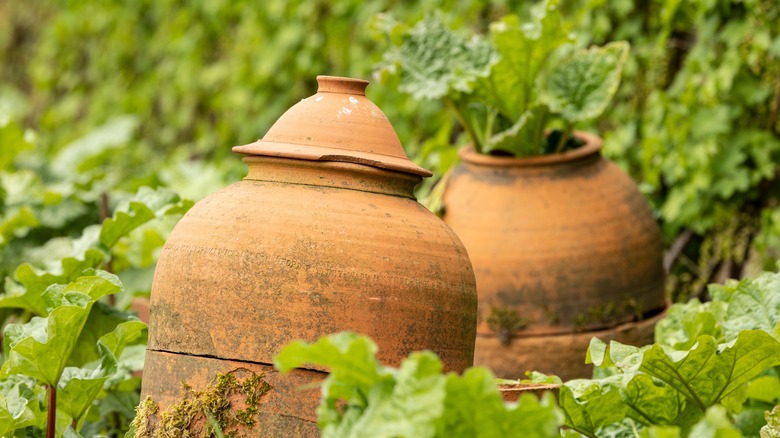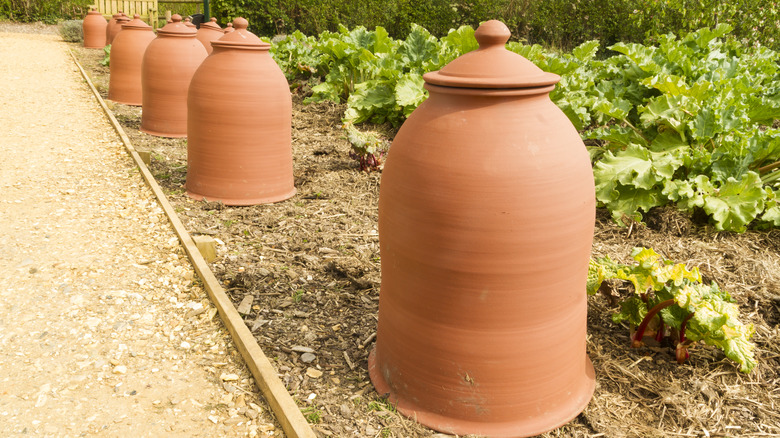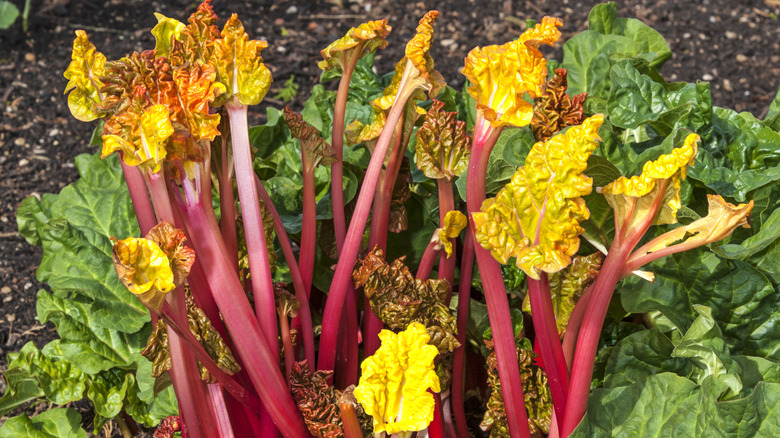How To Successfully Force Your Rhubarb To Achieve An Earlier Harvest
Homegrown rhubarb is a delightful treat and can be used to make tasty desserts such as a rhubarb pie or a nice rhubarb crisp. It is also great for canning by boiling the stems into a sweet rhubarb jam that you can store away to enjoy throughout the year. The stems of the vegetable, also known as rhubarb sticks, can be harvested from about mid-spring up to the middle of summer. However, there's a way to '"force rhubarb" for an even earlier tastier harvest.
Depriving plants of light is known as forcing and is a simple way of tricking them into early growth. Basically, the plant stretches out in search of light in the dark and grows quicker. Forced rhubarb stems appear paler in color compared to non-forced rhubarb, which is red. The delicacy is highly sought after for its pleasant taste and is far less bitter and not as tart as traditional rhubarb, which is a good reason to give it a try.
Cover rhubarb crowns in the winter with a large container to block out light
The most effective time to force rhubarb is in late winter when the plants are still dormant. In locations with four-season climates, the ideal forcing period stretches from December to March, although you can start the process as early as November.
When forcing, choose the larger crowns in your rhubarb patch that are three years of age or older. Crowns are established plants that are at least one year old (rhubarb is usually planted from crowns instead of propagated by seed). As far as supplies go, you will need a large container and mulch. Cover the rhubarb plants you want to force with a pot, bucket, or rhubarb forcer that blocks all light. You can use tape to cover any holes or cracks so light does not get in. Next, place mulch or manure around the outside of the container to insulate the plant — this will retain warmth and help accelerate growth. For ideal conditions, make sure you choose the best kind of mulch.
Your rhubarb will be ready to pick as soon as the stems touch the top of the container. Usually, this takes about eight weeks after covering.
Choose different crowns to force the next growing season
Forcing can be pretty tough on a plant, so crowns that have been forced need a resting period. Forced crowns should be left to recover the following year when rhubarb is in season – by allowing them to grow naturally, the plants regain their strength so the stems can grow thicker.
For best results, you can also choose a rhubarb variety that is specifically for forcing. Some common options include "Victoria" and "Timperley Early," which are known to be two forcing favorites and produce high yields. Your local garden store will likely have options that do well in your climate. Rhubarb thrives in Hardiness Zones 3 to 8 and grows best in areas where the ground freezes for part of the year so the crowns can go into a dormant period during the winter.
Forcing rhubarb is a great way to have an early crop, and the unique flavor is a wonderful treat.


